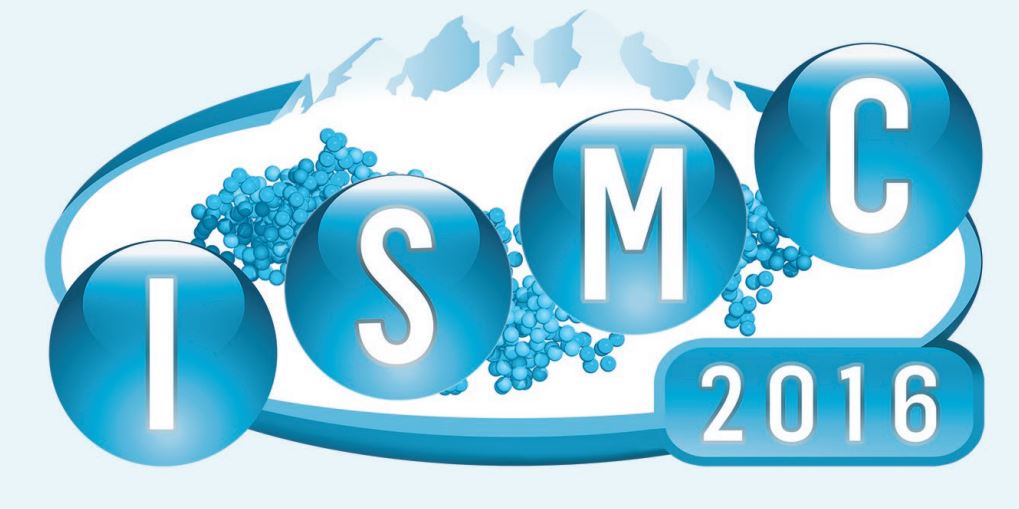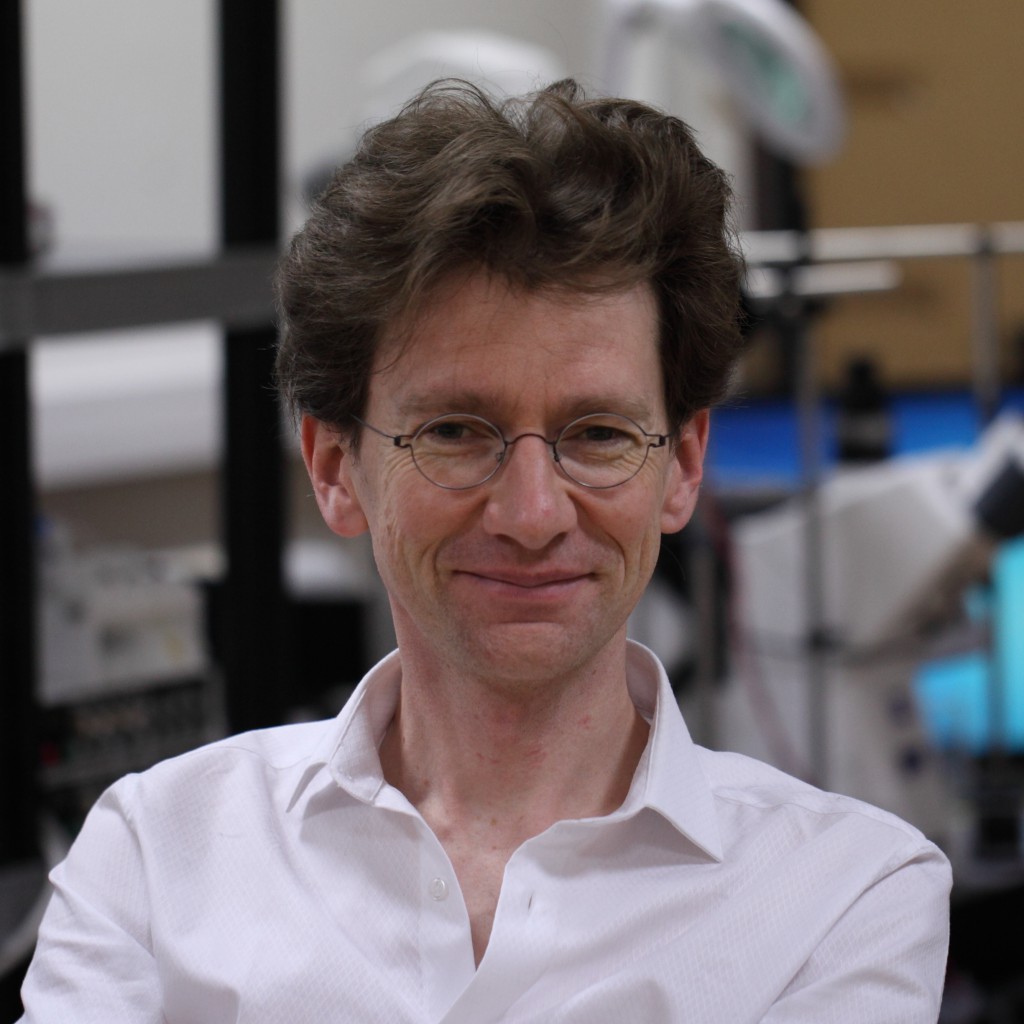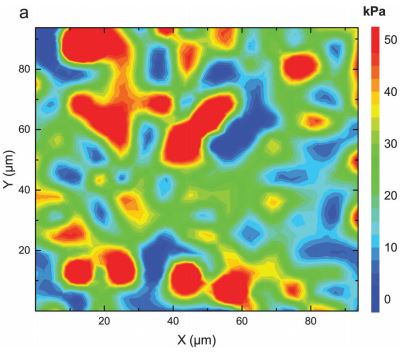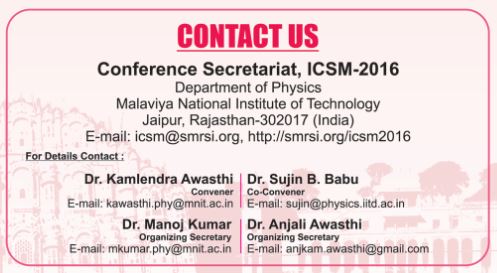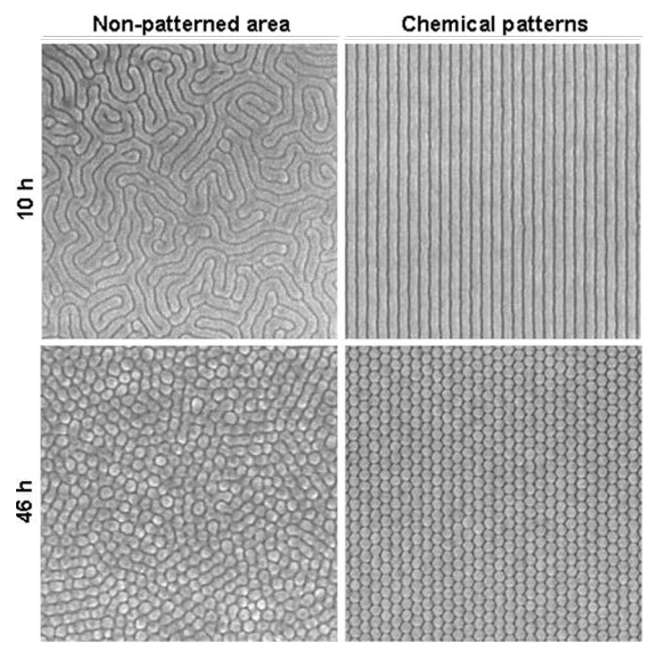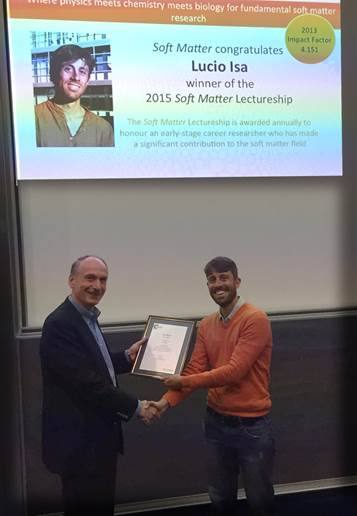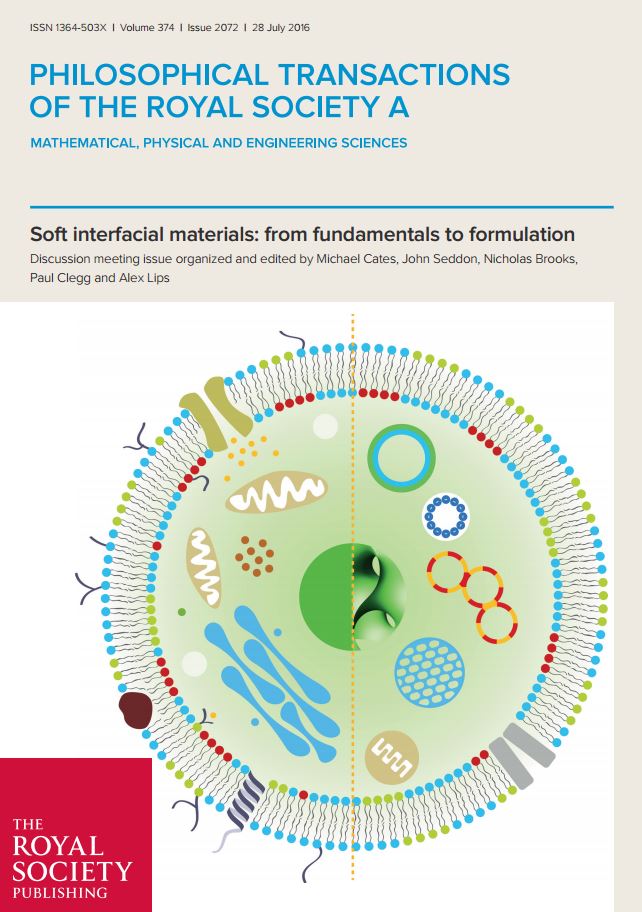
Cover image - Courtesy of N. J. Brooks.
Royal Society Publishing has recently published a special issue of Philosophical Transactions A entitled Soft interfacial materials: from fundamentals to formulation.
The collection was organised and edited by Michael Cates, John Seddon, Nicholas Brooks, Paul Clegg and Alex Lips. who wrote an Introduction piece.
This themed issue reports papers presented at a Discussion Meeting intended not only to address the fundamental science, focusing on generic design principles for self-organisation and interfacial structure, but also to explore the resulting prospects for ‘informed formulation’ of new and improved industrial products.
This issue is available to read online, including the Introduction which is free to access:
Introduction:
Soft interfacial materials: from fundamentals to formulation
N. J. Brooks, M. E. Cates, P. S. Clegg, A. Lips, W. C. K. Poon, J. M. Seddon
Research articles:
– Non-ionic surfactant phase diagram prediction by recursive partitioning
Gordon Bell
– The physics of stratum corneum lipid membranes
Chinmay Das, Peter D. Olmsted
– Lipid self-assembled structures for reactivity control in food
L. Sagalowicz, C. Moccand, T. Davidek, R. Ghanbari, I. Martiel, R. Negrini, R. Mezzenga, M. E. Leser, I. Blank, M. Michel
– Exploring the in meso crystallization mechanism by characterizing the lipid mesophase microenvironment during the growth of single transmembrane α-helical peptide crystals
Leonie van ‘t Hag, Konstantin Knoblich, Shane A. Seabrook, Nigel M. Kirby, Stephen T. Mudie, Deborah Lau, Xu Li, Sally L. Gras, Xavier Mulet, Matthew E. Call, Melissa J. Call, Calum J. Drummond, Charlotte E. Conn
– Determining drug release rates of hydrophobic compounds from nanocarriers
Suzanne M. D’Addio, Abdallah A. Bukari, Mohammed Dawoud, Heike Bunjes, Carlos Rinaldi, Robert K. Prud’homme
– Arrested coalescence of viscoelastic droplets: polydisperse doublets
Prerna Dahiya, Marco Caggioni, Patrick T. Spicer
– A phenomenological description of BslA assemblies across multiple length scales
Ryan J. Morris, Keith M. Bromley, Nicola Stanley-Wall, Cait E. MacPhee
– Some modification of cellulose nanocrystals for functional Pickering emulsions
Dorra Saidane, Emilie Perrin, Fanch Cherhal, Florian Guellec, Isabelle Capron
– Manufacture of poly(methyl methacrylate) microspheres using membrane emulsification
Jaiyana Bux, Mohamed S. Manga, Timothy N. Hunter, Simon Biggs
Review articles:
– Cationic liposome–nucleic acid nanoparticle assemblies with applications in gene delivery and gene silencing
Ramsey N. Majzoub, Kai K. Ewert, Cyrus R. Safinya
– Physical basis of some membrane shaping mechanisms
Mijo Simunovic, Coline Prévost, Andrew Callan-Jones, Patricia Bassereau
– Soft electrostatic repulsion in particle monolayers at liquid interfaces: surface pressure and effect of aggregation
Peter A. Kralchevsky, Krassimir D. Danov, Plamen V. Petkov
– Curvature-driven assembly in soft matter
Iris B. Liu, Nima Sharifi-Mood, Kathleen J. Stebe
Opinion piece:
– Self-assembly of small peptide amphiphiles, the structures formed and their applications. (A foods and home and personal care perspective)
W. J. Frith
We hope you enjoy reading this collection.
Comments Off on Soft interfacial materials: from fundamentals to formulation


